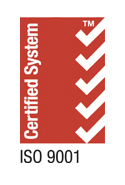Every day companies look at their products being made with other casting
|
What is lost foam?
Lost foam casting is a type of evaporative-pattern casting process that originated in the 1950s. A foam pattern is used to form a mold. Molten metal is then poured into the molding cavity, which evaporates the foam (the foam is 'lost'). The metal replaces the foam, perfectly replicating the original pattern. This process provides foundries with a cost-effective way to manufacture complex cast metal products with minimal machine work.
Why lost foam?
Lost foam manufacturing is a small but vital part of the metal casting industry. Every day companies look at their products being made with other casting methods and search for a way to reduce cost. Lost foam not only allows a reduction in part cost but also increases product uniformity and quality.
Lost foam casting is an excellent choice for complex castings that would normally require cores. It is dimensionally accurate, maintains an excellent surface finish, requires no draft, and has no parting lines so no flash is formed. The result is a seamless product with no imperfections. Most all metals, ferrous and non-ferrous, can be successfully used in this process.
Compared to other types of casting, lost foam allows for lower production cost and is an environmentally friendly process with less waste.

